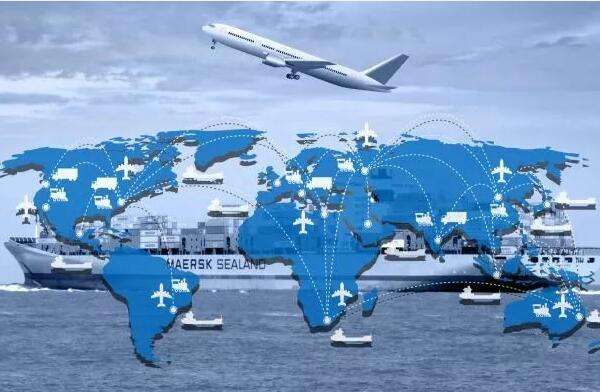
美国留学生物流管理作业:浅析航空运输行业的发展
提到物流管理专业,最近电商的发展促进了物流行业的繁荣,也因此让更多人选择出国留学深造物流管理专业,尤其是美国留学生在选择这个专业的时候,就准备通过英文完成学业以及作业考试,那么这次美国留学生物流管理作业“浅析航空运输行业的发展”怎么写呢?下面美国本科物流管理作业辅导来带大家看看

商业航空运输的发展和它的持续增长导致越来越多的航空延迟问题,这是航空运输行业最大的挑战之一。“守时”的重要性能指标之一是通过航空运输的性能所表现出来的。它能够充分体现航班“准时到达的比例”,反对延迟。这一概念有许多定义,但据美国交通部交通统计局,其中有这样一个定义,“什么是航班延误,如果它到达(或离开)的地方距离预期时间晚了15分钟以上(包括15分钟),这样的结果就会反映在计算机预订系统中”(2010)。这个定义一直被美国航空运输所引用。
美国留学生通过了解2000年和2009年之间航空运输情况,相关的改善措施大多是在2000年至2003年之间提出来的,延误航班的百分比从2004年到2008年不断增加。2009年和2010年的航班延误有所减少,部分原因是因为经济危机严重影响了交通行业的发展。
下面是美国留学生用英文写的作业:
The development of the commercial air transport and its continuous growth has leads to cause more and more massive delays along the years, which makes from delays one of the biggest challenge for the air transport industry. ‘Punctuality’ is one of the important performance indicators for operational air transport performance. It represents the proportion of flights that arrive “on-time” as opposition to delayed. This concept has many definitions but according to of the United States Department of Transportation’s Bureau of Transportation Statistics (US DOT’s BTS), a “flight is considered delayed if it arrived at (or departed) the gate 15 minutes or more after the schedule arrival (departure) time as reflected in the Computerized Reservation System” (2010). This definition is retained since data collected from the United States (US) will be used for this thesis.
Despite an improvement between 2000 and 2003, the percentage of delayed flight increased continuously from 2004 to 2008. 2009 and 2010 have seen their percentages of delayed flights decreasing materially but this has to be related to the economic crisis which materially affected the traffic.
Because of the high level of competition in the airline industry and the high degree of public exposure, airlines always have the desire to ensure that their flights reach their destination within the accepted 15 minutes window. Their reputation is based on the services they offer, whose punctuality is part of. Also, punctuality raises many issues like time slot allocation, future flight cockpit and cabin crew schedules, curfews, aircraft maintenance plan, or resource utilisation.
Furthermore, On-Time Performance (OTP) is crucial for airlines since it influences shareholders’ decision to invest or not in the company. Indeed, OTP directly impacts direct operational costs due to the disturbances in operations but also indirect operating costs essentially through the loss of market share (Wu, 2003). Therefore considerable effort is expended by airlines to improve their OTP.
Departure delays ‘of a turnaround aircraft is influenced by the length of scheduled turnaround time, the arrival punctuality...as well as the operational efficiency of aircraft grounds services” (Wu, 2003). As for arrival delays, the BTS data shows that one third of the arrival delays was the result of a late arrivals of the previous flight (2010).
Thus a single initial delay can lead to the whole network disruption through its propagation throughout the airline’s resources. Such delays caused by a previous one are classified as ‘reactionary’ or ‘knock-on’ delay. Those that propagate through the aircraft are known as rotational delay and those through the crew as non-rotational delay.
Reactionary delays are critical because of the costs they generate at two different levels. First they involve at the scheduling stage strategic costs due to the resources committed as contingency for delays. Secondly the day of operation the emergency measures taken incurred tactical costs (Cook, 2007). However, they are most of the time not well understood and consequently anticipated. Yet they are the cause of an even more serious impact than the root delay itself (AhmadBeygi, 2008). The CODAs annual DIGEST 2008 stresses that 40% of the total delayed minutes is caused by reactionary delays (2009).
As the consequences of delay can be very severe, airline take measures to try to minimise their propagation. The allocation of slack time or “buffer time” in the schedule is one of the existing management strategies to enhance the level of punctuality (Al-Haimi, 1991). Buffer time is extra time that can be used either in the turnaround time to prevent against the risk of delay propagation due to a late incoming aircraft or irregularities during the ground activities. Or it can be inserted in the flight time in case of disturbance. In that case the schedule flight time encompasses the actual flight time and the slack time (Cook, 2007). This practice requires a high level of predictability of operations since it will impact the extent to which slack time will be added in the flight duration. However, although adding slack time allow for a better management of punctuality it is not without knock-on effect on the costs. Indeed, the major consequence of padding schedule is a penalty in resources utilisation and hence in productivity and profits. Considering that an A320 buffer minute’s cost is equal to €49, “cutting 5 minutes on average of 50% of all European schedules thanks to higher predictability would be worth some €1,000 million per annum, through savings or better use of airline and airport resources” (Rapajic, 2009). The cost of buffer time is equivalent to the strategic cost discussed earlier. However it is hard to calculate because buffer time also brings savings through the benefits realised by avoiding delays that are not tangible. However, Cook tried to calculate this cost by distinguishing three cases have to be distinguished. First a shorter buffer will involved the strategic cost of it and the cost of delay the day of operation it occurred. Secondly a buffer covering just the length of the delay will avoid any tactical cost and bring the satisfaction of passengers to be on-time. Finally a too long buffer means that the airline has paid an excessive strategic cost but again passengers are satisfied (Cook, 2004). Depending on assumptions about the aircraft model, the number of late arrival minutes, the usage or not of the minute and the moment of occurrence of the delay (in case of, taxi time, holding or en-route) he found a minute airborne buffer time cost ranging from 5 to 351€.
Therefore buffer time can be a very costly way to reduce delay if not used wisely. The theoretical buffer that should be added to airline’s schedules should be ‘up to the point at which the cost of doing this equals the expected cost of the tactical delays they are designed to absorb’ (Guest, 2007).
Buffer times are widely used today in the airline industries. Table 1.1 gives a comparison of block times for a selection of US routes during the last 15 years. It shows that the schedule block time has increased and even up to more than 30% on some routes. At the same time, the number of flights arriving early is increasing, meaning that airline tend to pad to much their schedule which implies a loss of money. This leads to the conclusion that either improvement has to be done when calculating the length of buffer times or that airlines increase intentionally their schedule time to ensure a high level of punctuality.
In order to calculate the necessary buffer time, airlines base their calculations on historical data performance. However, the resulting schedules are most of the time not optimised in terms of cost, meaning that some contributing factors are probably not taken into account during the generation of schedules (Wu, 2002). Different algorithms have shown that airline schedule could be optimized either by reallocating the slack time differently in the schedule or by adding more or less buffer minutes (Wu, 2002). The number of research done about the contributing factors to the variation in buffer time is limited and in addition the few available studies often use the data for one particular airline. Mayer studied the effect of the number of competitors and the quality of airports as a major, medium, small or non-hub to the airline schedule (2003). However, one can imagine that contributing factors to the distribution of delays could influence the distribution of buffer time.
This research will try to understand the factors that influence the repartition of delay and hence buffer times and also evaluate the efficiency of buffer time in reducing delays.
The study is organised in five main parts, each divided in subparts. The first chapter gives the background information related to subject to briefly familiarise the reader with the research. It provides the research question and objectives of the paper and finally includes an outline of the methodology and chapters of this thesis. This is followed by the second chapter whose aim is to provide a review of the relevant literature related to the topic. Both theoretical and empirical studies are covered to give a general idea about the subject. It is divided in three parts, examining first the importance of on-time performance for airlines, secondly the mechanism of propagation of delay and its impact and finally the implementation of buffer time in airline schedule. The methodology is presented in the third chapter. It includes an explanation of the data collection method and a description of the data used for the research. It also presents the hypothesis of the analysis and a justification of the statistical tests used to test them. Finally the limitations of the method used to answer the different objectives are presented. After those three first chapters, the results of the analysis are presented. In this case, it describes in a first part the systematic evolution of punctuality in relation with some factors and in a second part the contributing factors to the variation of buffer times. A discussion and interpretation of the results are provided in the same chapter. Finally, the conclusion of this thesis encompasses the summary of the key findings and some recommendations for the allocation of buffer time are drawn for the analyses. It ends up with a presentation of the possible area for further research.
From the perspective of relationship exists, the existence of human beings as the existence of human society, production relations and to maintain this kind of production relations is the management activities.From the perspective of the state of being is generated in the relationship and changes, different social structures have different management idea, in other words, different management idea created different social structure, human society is the existence and development in the management activities and management structure, as a result, management is the manner in which the human society exists, management itself will permeate the idea of how humans in their existence.Modern capitalism society would never use in ancient China feudal society's management idea, on the other hand, the ancient Chinese feudal society also won't produce democracy management, modern enterprise management structure, etc.
Link management and the existence of the human way, means how to understand the existence of human beings will be how to understand management, and in turn, how human ideal, there is what kind of management concept.Human nature are implemented in the management, management and its concept represents the human as the essence of social existence, is management to construct the human world.Human social structure, economic structure, political structure is essentially a in order to better coordinate the social activities and form management structure, out of which the management essence, human society will become fragmented, is management to construct the human society.
Especially since entering modern times, human society is getting more and more in the form of organization, the reality of people must be under a certain organization, and management as key factor of the existence of maintaining organization and practice of people's social life has a great influence, people live, work, the meaning of life is closely related with the idea of management.In this concept, must contain the people obtain the ultimate goal of survival or highest ideal: namely a fit within the existing way of human ideal and social coordination way, this is the essence value of management or the ultimate value.
Management is not just about how humans as the concept of social existence, management must have a specific goal.As management thought historian Ryan points out, the management of the organization must have a goal, or to do something, maybe this goal is the annual gathering, hunting, fruit planting crops or collective protection against nomadic plunder, and so on.In addition to specific goals, the members of the organization also need to have a job or fighting tools, these tools is to achieve the purpose of the resources or means, including people, weapons, tools or any other things;Also need to participate in the activities of organization of people make specific arrangements, its aim is to achieve specific goals, can make the interaction and coordinated their efforts;Finally, the group found that if there is a dedicated to ensure that keeps the entire organization to achieve its concrete goal task, so it is possible to achieve better results.
Management, therefore, in addition to permeate human ideas about how to survive, must also be concerned about "how to achieve specific goals" technical problems.In the early 20th century, the French law jol is put forward, to achieve organization's specific goals, all managers must perform the five management activities: plan, organize, command, coordinate and control;To effectively achieve the specific goal, must also follow the division of labor, power, discipline, unified command, unified guidance, personal interest obedience overall benefit, remuneration, centralized, hierarchical chain, order, equality, personnel stability, initiative, the principle of unity, a total of 14.
Marx thought, the concept of the common value from people to satisfy their need of external relations.This suggests that the need and satisfy the relationship between subject and object is the value of constantly generated.From the point of the this definition of value, human not only need to have the ultimate value such as "ideal" "faith", but in real life need to continue to achieve its specific goals, from so, in the management of how how how how to plan, organize, coordinate and control methods and means, of course, also has the value.
History first realized the management of the value is still fayol.Fayol's education is as an engineer, but as a multi-sectoral large enterprise with more than 9000 employees, managing, fayol recognized that the management of the organization's success depends on its leader more ability rather than technical ability, management and technology independent of each other.And management of the ultimate ideal or ultimate value relative to the value of management targets and its efficiency can be called management tool value.
Management penetrate human about the ultimate goal of social practice form or highest ideal, also must also determine the organization's each work content and specific goals, and more than both the needs of the people in the organization of forming, form their mutually distinguishes interrelated unity, this is the duality of management value.
1. Management tool value depends on the ultimate value.Because man has evolved from the narrow sense of the animal kingdom, animal consciousness, likes and dislikes, etc., are focusing on specific targets, effect is only subject to the evolution of the "natural selection" principle.In the early days of human society, cognitive, moral, art is means, short-term, specific goals is the fundamental purpose, such as hunting activities must be captured prey, planting to harvest the fruit, the more human practice level is low, with immediate effect to the more closely.
With the improvement of human social practice level, the improvement of the living conditions, people start to have nothing to do with short-term effect, specific things began to get interested, has found that these differences in specific objectives of the value of things, this is the ultimate value.In practice, for example, it was found that the "human dignity" sometimes in the society is more important than the specific target, in order to maintain the dignity of the human nature, in some cases, people would rather give up concrete goals.Again, for example, it was found that the meaning of the value of life not only comes from and the satiated with food and survive, also can have a higher meaning: even if human nature more noble, more beautiful, make human society become more perfect, more worthy of love, this is our each people accidentally comes into the world and the purpose of the ultimate value of life.
Out of all the behavior of the people in the primitive society it is in this under the guidance of the implementation of the ultimate value.In bees, ants, we have found a clear simple division of labor and a surprisingly complex social organization, namely the bees build the honeycomb, its precision and accuracy is almost like the geometrician.This activity requires a very complicated system of "collaboration", but we don't think bees and ants do is "management" work --, although the job no matter in any ways are "purposeful, coordination, group work".
In contrast with the bees can see, the establishment of management target depends on the management concept and the main body of the existing of the future met and ideal results of speculation, and the ideal results in management activities prior to the implementation of the is not implemented.Therefore, specific goals depends on the ultimate goal, management tool value depends on the ultimate value.
2. The tool itself, the ultimate value.Efficiency is one of the most important tools of value management, modern management, founder of the robot is the core content of "the principles of scientific management", how to improve the working efficiency of the workshop: it includes famous time study, difference between master piece work, function and task management.
But it is well known that the efficiency of management is the robot in the history of socialism has been heated debate.In 1911 about the opinions of the "scientific management" hearing, the focus of the problem there is no doubt that both sides to focus on the penetration in the efficiency of management in the management of the ultimate value on: opponents argue that under the scientific management system, as one of the workers, if he does not belong to the "first-class", in the world, there is no way out - if he is in a particular industry is not a "first-class" workers, is he should be destroyed, or be away?And Taylor insists that, if all the people in the world both labor and lazy, if they have the right to have the same good life, this phenomenon is certainly not reasonable, the pursuit of efficiency will make their lives won't be as good as, this is normal.
Therefore, we can see that the "efficiency" in fact, the Taylor about ultimate value management idea: to ensure every employer to obtain maximum fortunes, and also ensure that each employee can obtain the maximum benefit, the concept of completely is the human ideal of early capitalism, namely "the survival of the fittest, superior bad discard".This concept is progressive, of course, but it ignores the organization in addition to efficiency, there are other pursuit --, the efficiency of the organization is not pure is to realize the machine;And achieve efficiency means not only the time study, piece wage, there are other more "humane" means.
3. The ultimate value also must rely on the tool value and implementation.Although the management of tool value is determined by the ultimate value, but the ultimate value does not exist alone.Management is the ultimate value with the realization of the target.
From the perspective of value philosophy, the value is not "inherent" as the object, the value is a concept relations rather than the entity concept, value is the characteristics of the subject and object interaction, which have significance on the subject.
Management, therefore, the ultimate value of certain and every management activities related to the specific target, it does not exist alone from the target of management, the ultimate value attached to the tool value, in the management of specific goals and realize their own.

以上是美国留学生的作业浅析航空运输行业的发展,这个作业并不简单,不仅要了解航空运输业的发展,还要用英文表达出来,以后这样的物流管理作业有很多,都需要留学生用英文表达出来,如果在完成作业过程中有任何疑问,欢迎咨询美国本科物流管理作业辅导老师。
凡来源标注“考而思”均为考而思原创文章,版权均属考而思教育所以,任何媒体、网站或个人不得转载,否则追究法律责任。

kaoersi03















